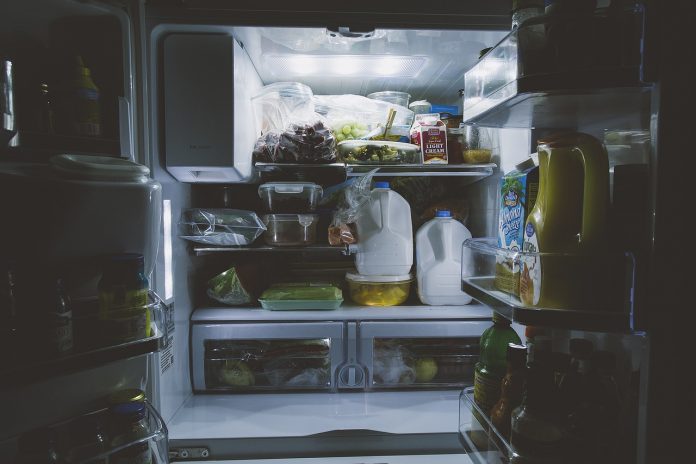By Tracy Turner | Ohio State Chow Line
“I went grocery shopping last week, and the next day, our power went out for several hours due to severe storms. Is there any food that can be saved, or do I have to throw everything out of our fridge due to spoilage?”
It’s that time of year when severe weather can leave consumers without power for a few minutes to multiple days, in some instances. Rounds of severe weather have already impacted many consumers nationwide this spring, with thousands experiencing widespread power outages and flooding issues in Ohio and throughout the country.
It’s incredibly frustrating to think you have to discard groceries that you’ve just purchased due to a power outage. Understanding the basics of food safety and how perishable foods are impacted when the temperature is 40 degrees Fahrenheit or more can help you decide if your food is still safe.
Deciding what’s safe to eat
Generally speaking, perishable foods that have been at temperatures of 40 degrees or higher for two hours or more will need to be discarded to avoid the potential for foodborne illnesses. This is because food that isn’t maintained at proper temperatures can enter the “danger zone,” a range of temperatures between 40 and 140 degrees at which bacteria grows most rapidly.
If your power goes out, keep the refrigerator and freezer doors closed as much as possible. If not opened, a refrigerator without power will keep food cold for about four hours. A half-full freezer will hold its temperature for about 24 hours, and for 48 hours if the freezer is full, according to the U.S. Department of Agriculture.
Always keep a thermometer in the refrigerator so you know the precise inside air temperature, said Kate Shumaker, an Ohio State University Extension educator and registered dietitian. OSU Extension is the outreach arm of The Ohio State University College of Food, Agricultural, and Environmental Sciences (CFAES).
“You can also keep several ice cubes in a zipper bag or small container in the freezer as a way to monitor the temperature,” she said. “If the ice cubes have melted, the temperature was above 32 degrees.”
Once the power is back on, check your food to make sure it is safe to eat, making sure to check each item separately.
What needs thrown out
According to FoodSafety.gov, here is the list of perishable foods you’d need to discard if they’ve been at 40 degrees or higher for two hours or more:
- Meat, poultry, and seafood products
- Soft cheeses and shredded cheeses
- Milk, cream, yogurt, and other dairy products
- Opened baby formula
- Eggs and egg products
- Dough and cooked pasta
- Cooked or cut produce
FoodSafety.gov says the following perishable foods are generally OK to keep after they’ve been held at 40 degrees or higher for more than two hours:
- Hard cheeses such as cheddar, colby, Swiss, Parmesan, provolone, and Romano
- Grated Parmesan, Romano, or a combination of both in a can or a jar
- Butter and margarine
- Opened fruit juices
- Opened, canned fruits
- Jelly, relish, taco sauce, mustard, ketchup, olives, and pickles
- Worcestershire, soy, barbecue, and hoisin sauces
- Peanut butter
- Opened, vinegar-based dressings
- Breads, rolls, cakes, muffins, quick breads, and tortillas
- Breakfast foods such as waffles, pancakes, and bagels
- Fruit pies
- Fresh mushrooms, herbs, and spices
- Uncut, raw vegetables and fruits
Another safety rule of thumb is to throw away any food that has an unusual odor, color, or texture, or feels warm to the touch, the USDA advises. You should also check any of your frozen foods for ice crystals. The food in your freezer that partially or completely thawed may be safely refrozen if it still contains ice crystals or is at 40 degrees or below.
“Some foods that might have completely thawed, such as raw meat, you might not want to refreeze due to a decrease in quality,” Shumaker said. “These products could be cooked first and then frozen in their cooked form—such as ground beef crumbles or chicken pieces.”
Food damaged by flooding
If your home was flooded, it is important that you throw away any food that may have come into contact with floodwater. That includes cartons of milk, juice or eggs and any raw vegetables and fruits. In fact, any foods in your home that aren’t in a waterproof container that came into contact with floodwater need to be thrown out.
Floodwater can seep into and contaminate foods packaged in plastic wrap or cardboard and in containers with screw-on caps, snap lids and pull tops, according to the USDA Food Safety and Inspection Service.
Remember, when in doubt about the safety of the food item, throw it out. Never taste the food to decide if it is safe to eat, the USDA says.
Chow Line is a service of the College of Food, Agricultural, and Environmental Sciences and its outreach and research arms, OSU Extension and the Ohio Agricultural Research and Development Center. Send questions to Chow Line, c/o Tracy Turner, 364 W. Lane Ave., Suite B120, Columbus, OH 43201, or turner.490@osu.edu.














That’s good to know that the meat will need to be removed if has been warm for more than two hours. I feel like that would be especially important if you are planning on selling the meat to people. if the fridge at my store is ever broken, I’ll have to make sure that I get it repaired right away, and that I throw out any spoiled meat or cheese.